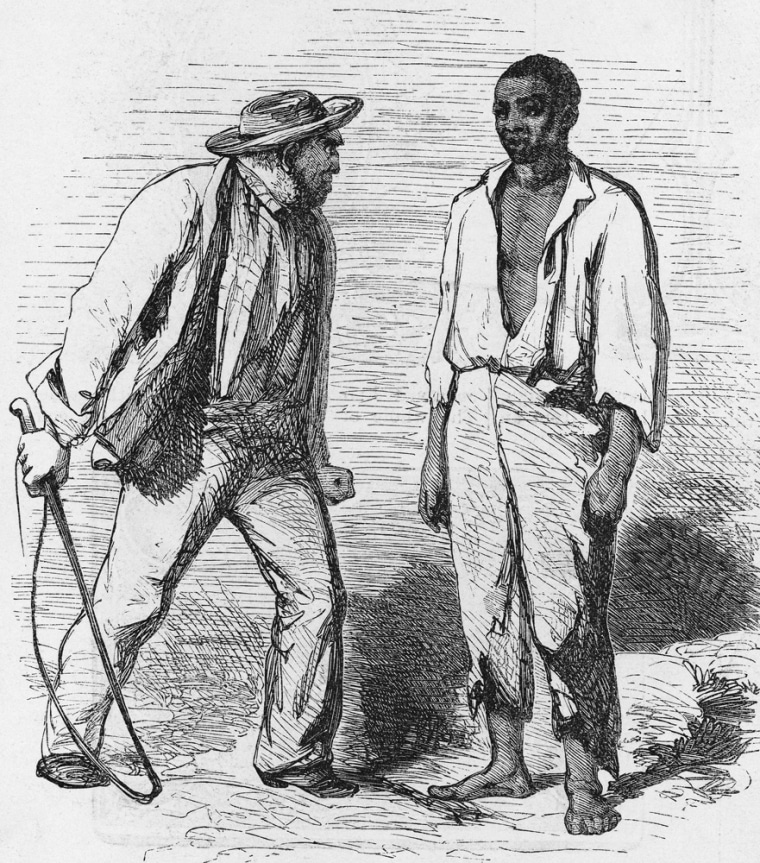The Haitian slave revolt of 1791 caused concern for American slave owners, who feared similar rebellions. Slave uprisings in the south intensified from the early 1800s until the Civil War, as did the abolitionist movement and efforts of the Underground Railroad. The division between North and South was further amplified by northerners who found it easy to be critical of southern slave owners, since most northern slaves already had been freed. Many northern abolitionists were Christians, and believed it was their God-given duty to protect the slaves. Southern proponents of slavery resented northern posturing in the debate over slavery, arguing that northerners would not experience the negative economic impact of manumission (emancipation of slaves) since their slaves were already free.
In some parts of the South, slave populations roughly equaled or exceeded that of whites, and resistance to slavery was growing and becoming more violent. Since colonial times, South Carolina had been home to a sizable population of free blacks, many of whom were descended from white masters. Some were freed voluntarily thanks to years of faithful service, while others purchased their freedom. But as long as there were free blacks, their presence concerned the white population.
In 1800, Gabriel Prosser organized more than 1,000 slaves and amassed an armory of weapons in Richmond, Virginia, in the first planned large-scale slave revolt. On the day of the invasion, bridges leading to Richmond were destroyed in a flood. Prosser was betrayed and captured by the state militia. Along with 35 of his men, he was hanged.
In 1804, the Underground Railroad was established in Pennsylvania. That same year, Ohio passed black laws to deter runaways from settling in the state.
In 1811, U.S. troops suppressed two slave rebellions near New Orleans.
For several days in 1816, 300 slaves and about 20 Native Americans captured Fort Blount in Florida's Apalachicola Bay before U.S. troops were sent in.
The colonization movement—an effort to repatriate slaves back to Africa—dates back to the eighteenth century. The British government, free black leaders in the U.S. and members of Congress all backed Paul Cuffee, a Quaker ship owner of American Indian and African American heritage, in his grand plan to return freed American slaves to Africa. Once per year, Captain Cuffee intended to take willing emigrants to the British colony of Sierra Leone at his own expense, bringing back valuable cargo on the return trip. In 1816, thirty-eight African Americans sailed with Captain Cuffee for Freetown, Sierra Leone, but his death in 1817 precluded subsequent trips. Cuffee’s repatriation efforts laid the groundwork for the American Colonization Society (ACS), which supported the founding of the Republic of Liberia in West Africa in 1821 as a refuge for freed slaves. Despite some opposition from abolitionists and blacks, in 1822, 86 black volunteers landed on the "Grain Coast” of Cape Montserrado. White agents of the ACS would govern them for many years, and abolitionists criticized the society and tried to discredit the colonization effort as a slaveholder's scheme. Yet, when many blacks wanted to go to Liberia after the Civil War, financial support for colonization faded as the society shifted its focus to educational and missionary efforts in Liberia rather than emigration.
In 1822, Denmark Vesey, a freed man and carpenter in Charleston, plotted a massive slave rebellion involving thousands of slaves on nearby plantations. Like Vesey, many of South Carolina's free blacks lived in Charleston, where they performed more than 50 different occupations, some as artisans. Vesey was betrayed, captured and hanged, but his accomplices were never caught.
In 1831, Nat Turner organized the only sustained slave rebellion in U.S. history. In the Confessions of Nat Turner, a transcript of statements recorded by physician Thomas Gray after Turner's capture while he awaited execution, Turner said he was following a divine prophecy when he killed 70 whites in Southampton County, Virginia. In the months-long search for Turner, at least one hundred blacks were killed.
In 1831, William Lloyd Garrison published the first issue of The Liberator, an anti-slavery newspaper.
The New England Anti-Slave Society was founded in 1832.
In 1835, a mob in Charleston, South Carolina burned abolitionist literature and expelled anti-slavery writers from the South.
In 1841, slaves on the Creole, a slave ship traveling from Virginia to Louisiana, overpowered the crew and sailed to the Bahamas, where they were granted asylum and freedom.
In 1845, Frederick Douglass published his memoir, Narrative of the Life of Frederick Douglass, an American Slave.
Harriet Tubman escaped from slavery in Maryland in 1849 and became one of the most prolific "conductors" on the Underground Railroad, returning to the South more than a dozen times and helping more than 300 slaves to freedom.
In London in 1853, abolitionist and slavery fugitive William Wells Brown published Clotel; or, The President's Daughter, widely considered the first novel by an African American.
Harriet E. Wilson's Our Nig, the first novel by an African American woman, was published in 1859.
In 1859, a group of slaves and white abolitionists led by John Brown captured a federal armory and arsenal, before the local militia suppressed their insurrection. Brown and others were captured, tried and executed. The incident hastened the start of the Civil War.
